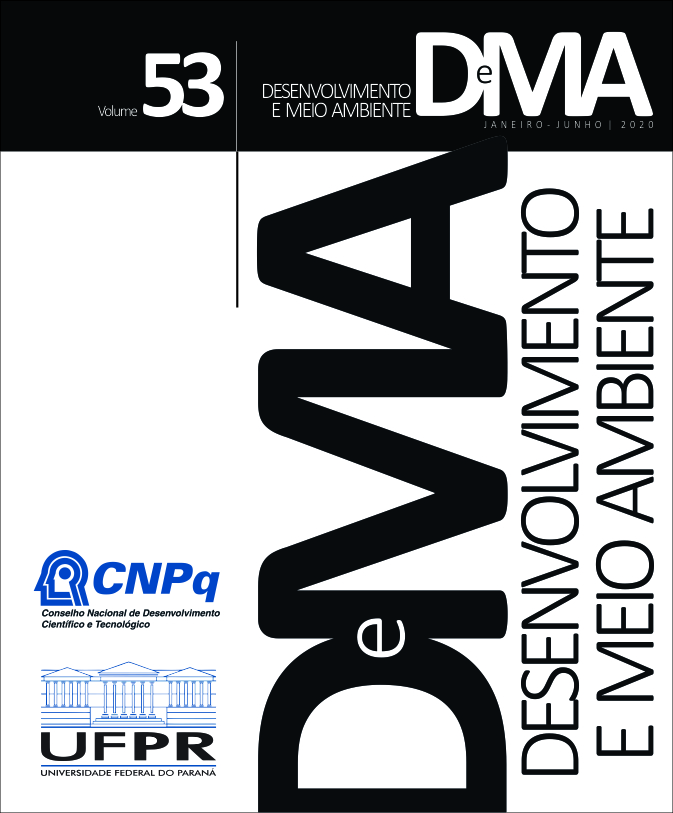Identificação de serviços ecossistêmicos em áreas de floresta mediante sensoriamento remoto
DOI:
https://doi.org/10.5380/dma.v53i0.62669Palavras-chave:
classificação de imagens, mineração, recuperação de áreas degradadas, restauração ecológicaResumo
O conceito de serviços ecossistêmicos tem ganhado espaço em processos de tomada de decisão e na gestão de projetos com potencial de causar significativa degradação ambiental, por explicitar a dependência que a sociedade tem dos benefícios ofertados pelos ecossistemas. Ao mesmo tempo, com o desenvolvimento de novos sensores e avanços tecnológicos, vem crescendo o uso de imagens de satélite como ferramenta do planejamento e gestão ambiental. O objetivo deste trabalho é a aplicação do sensoriamento remoto na identificação de ecossistemas, seus serviços e beneficiários para facilitar a aplicação do conceito de serviços ecossistêmicos ao planejamento e gestão ambiental. Mediante aplicação a uma mina de bauxita no Pará, em áreas de floresta amazônica de terra firme, são apresentadas as etapas para aplicação do conceito, desde o mapeamento da cobertura da terra até a identificação de beneficiários. Discute-se que duas técnicas, coleta de dados de campo com as comunidades e mapeamento da área por meio de classificação de imagens, são complementares. Os resultados mostram a aplicabilidade do sensoriamento remoto como ferramenta eficaz em suporte a identificação de serviços ecossistêmicos em contextos de planejamento e gestão ambiental.
Downloads
Publicado
Como Citar
Edição
Seção
Licença
Os Direitos Autorais sobre trabalhos publicados nesta revista são do autor, com direitos de primeira publicação para a revista. O conteúdo dos trabalhos publicados é de inteira responsabilidade dos autores. A DMA é um periódico de acesso aberto (open access), e adota a licença Creative Commons Atribuição 4.0 Não Adaptada (CC-BY), desde janeiro de 2023. Portanto, ao serem publicados por esta Revista, os artigos são de livre uso para compartilhar (copiar e redistribuir o material em qualquer suporte ou formato para qualquer fim, mesmo que comercial) e adaptar (remixar, transformar, e criar a partir do material para qualquer fim, mesmo que comercial). É preciso dar o crédito apropriado, prover um link para a licença e indicar se mudanças foram feitas.
Os conteúdos publicados pela DMA do v. 53 de 2020 ao v. 60 de 2022 são protegidos pela licença Creative Commons Atribuição – Não Comercial – Sem Derivações 4.0 Internacional.
A DMA é uma revista de acesso aberto desde a sua criação, entretanto, do v.1 de 2000 ao v. 52 de 2019, o periódico não adotava uma licença Creative Commons e, portanto, o tipo de licença não é indicado na página inicial dos artigos.




